How do you make a competitive home EV charging station as a new company? Talking to EV drivers about their pain points would be a great start. That’s what EVIQO has done; they claim to have surveyed 1,800 EV owners during their product development. This helps explain several key differences between the EVIQO and other products in this increasingly competitive market. I think this is a good option for EV drivers looking for a product with flexible installation options, and detailed energy consumption reporting.
Our Rating: 4.8/5
What we loved
- Long input & output cords
- Durable J1772 connector with metal components
- Polished app with flexible scheduling and cost estimates
What could be better
- The cord is good but not as pliable as high-end EV chargers in cold weather
- Holster angle could be better
Hardware Overview
The first thing you notice about the EVIQO charger is that is physically larger than it looks in photos online. It’s a square box 9.5 x 9.5 inches, and about 4 inches deep, there is a protruding lip around the outside of the device which helps with cord management when not in use.
The main reason it looks smaller in photos is because the NEMA 14-50 input cord is much longer than any other home charging product I have seen before. It is 3 feet long, and this was an intentional design decision for installation options. For homeowners with very low or very high NEMA 14-50 outlets, this home charger can still be mounted at an arms-reach level.
The front of the EVIQO charger has two bring status indicator lights and not much else. It’s a very clean look. While the input/out cords exit from the bottom of the device.
A standalone J1772 holster is included in the box for additional cord management and storage. Both of the wall mounting plates are metal, with four screw holes on each. Installation screws are included, and the instructions are clear. If you already have a NEMA 14-50 outlet, this is a very easy DIY installation.
Overall materials and build quality feel solid, it is comparable to more expensive home EV chargers from FLO, ChargePoint, and Tesla. The enclosure weatherproofing is rated IP66 & NEMA 4, meaning it will withstand jets of water and extreme temperatures. Some competitors go further with a NEMA 4X rating for better corrosion protection, but the EVIQO is more than capable for outdoor operation. The whole package is also backed by a 2-year warranty.
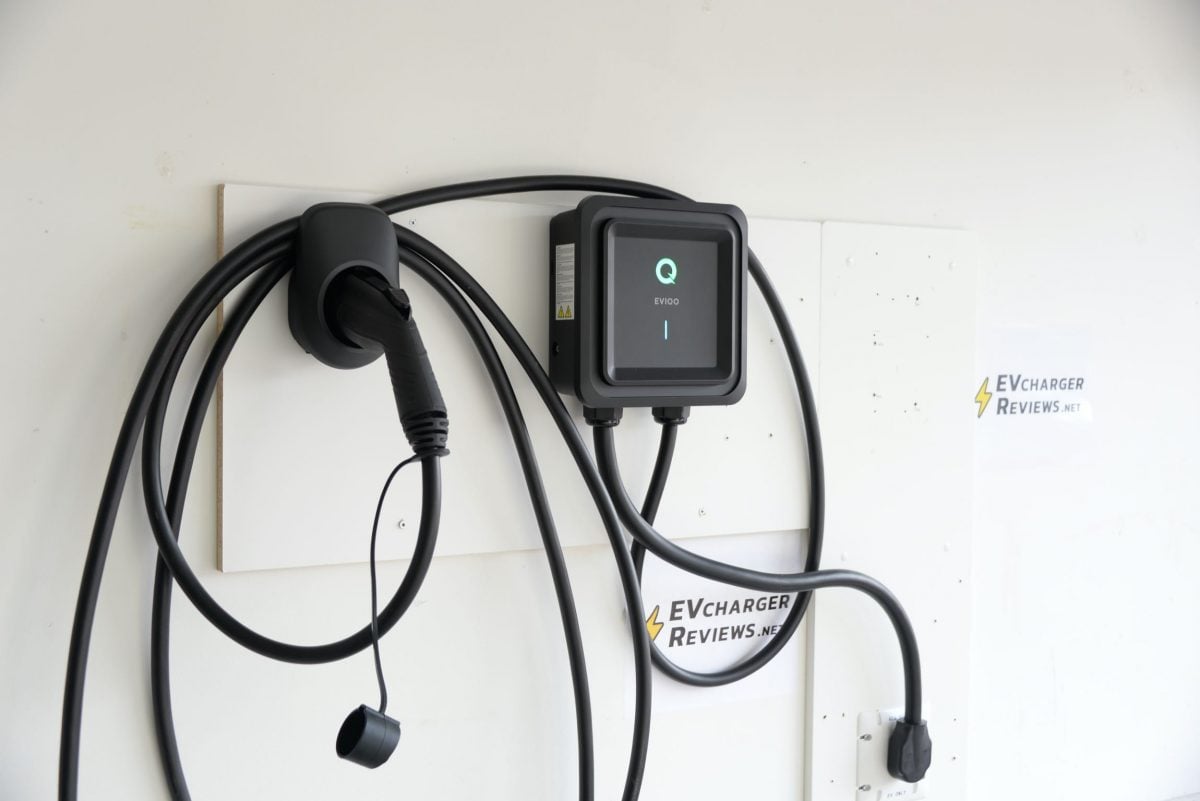
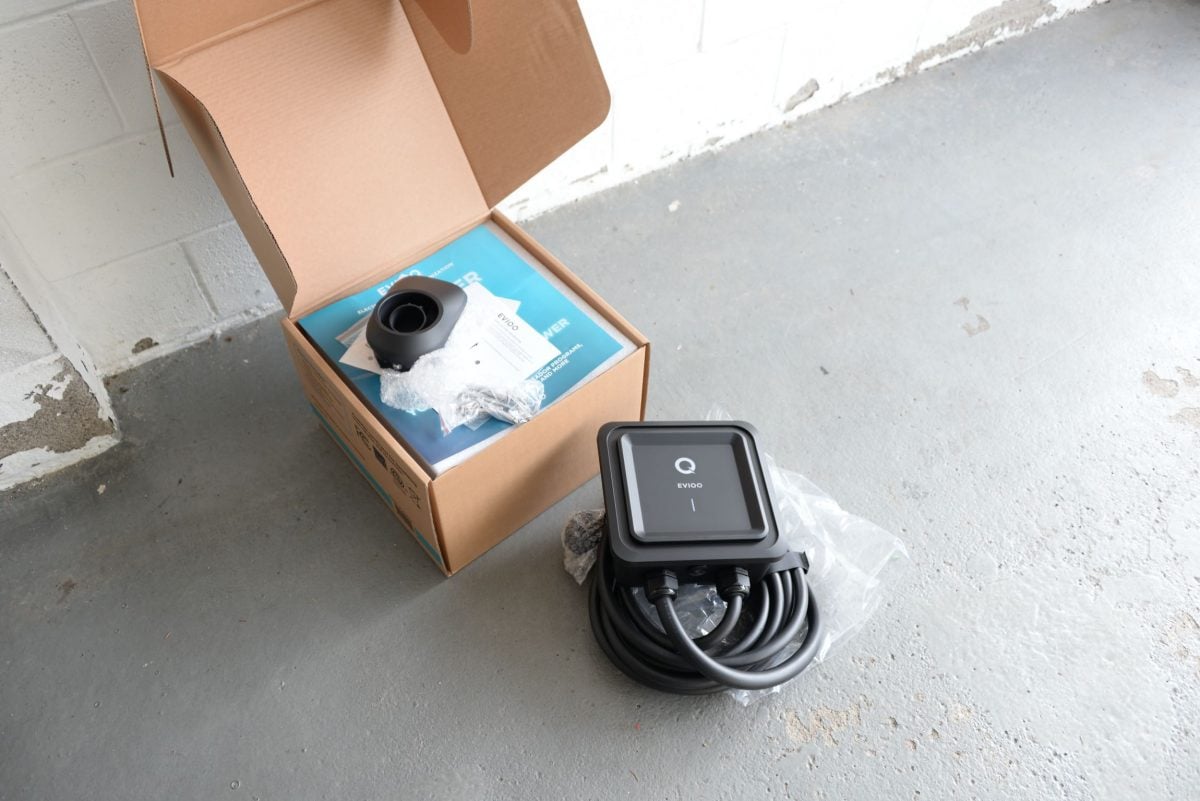
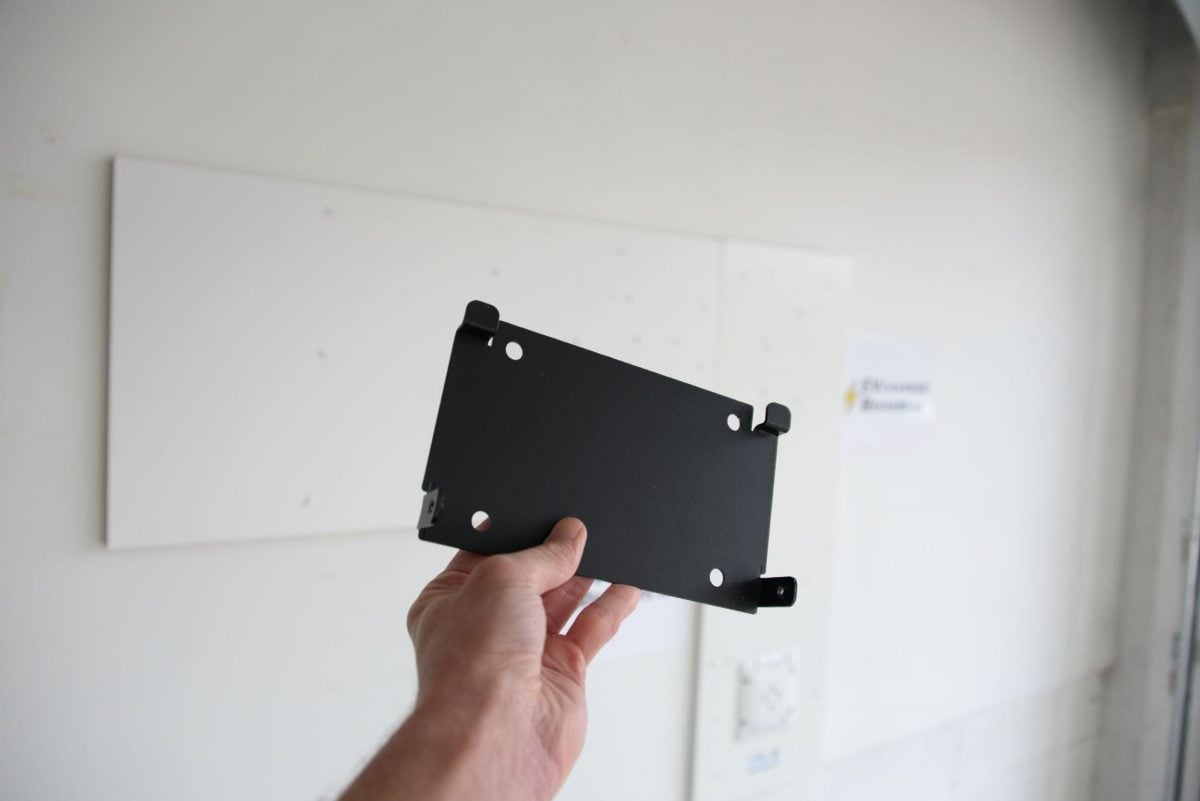
Charging Cord and J1772 Connector
The charging cord is 25 feet long, just like leading competitor products. This is great, because with a 25-foot cord, you have flexibility parking front-in or back-in, and the connector will still reach the EV charging port. Likewise, the long cord can reach another EV in an adjacent parking spot, if needed. The charging cord feels durable, and inside there are two AWG 9 wires and a single AWG 10 for ground. This is plenty of copper for 48 amps. The rubber insulation material feels great in the hand. It is not as soft and pliable in winter conditions as the cord from FLO or ChargePoint, but the EVIQO cord is a lot better than similarly priced competitors. We measured the cord to be 18.4 mm thick.
The input cable, as mentioned earlier is a whole 3 feet long, this allows for a wide range of installation placement options. Inside, there is a pair of AWG 6 wires and an AWG 8 line for ground. Very respectable material choices, with few comprises made here.
The J1772 connector on the EVIQO is the best we have seen on a residential charging station. The handle is grippy and rubberized, while the release tab and clasp are metal. Most competitors use generic J1772 connectors with plastic handles and plastic release tabs that easily crack and break when dropped. It’s great to see EVIQO pay attention to the details and touchpoints that users interact with daily.
I tested this unit with a Tesla Model Y, so I needed to use a J1772-to-Tesla adapter (not included) and had zero fit or compatibility issues. Everything worked as expected.
If there is one small criticism, it would be the cord holster angle. It makes the J1772 connector sit almost perpendicular to the wall, so the cord comes further out from the wall than ideal. In my tight parking space, I ended up wrapping the cord around the holster and letting the J1772 connector hang. Otherwise, I might strike the cord with my side mirrors when backing out of the garage. In future iterations, it would be great to see a more angled holster or an integrated holster like on the FLO or Tesla Wall Connector.
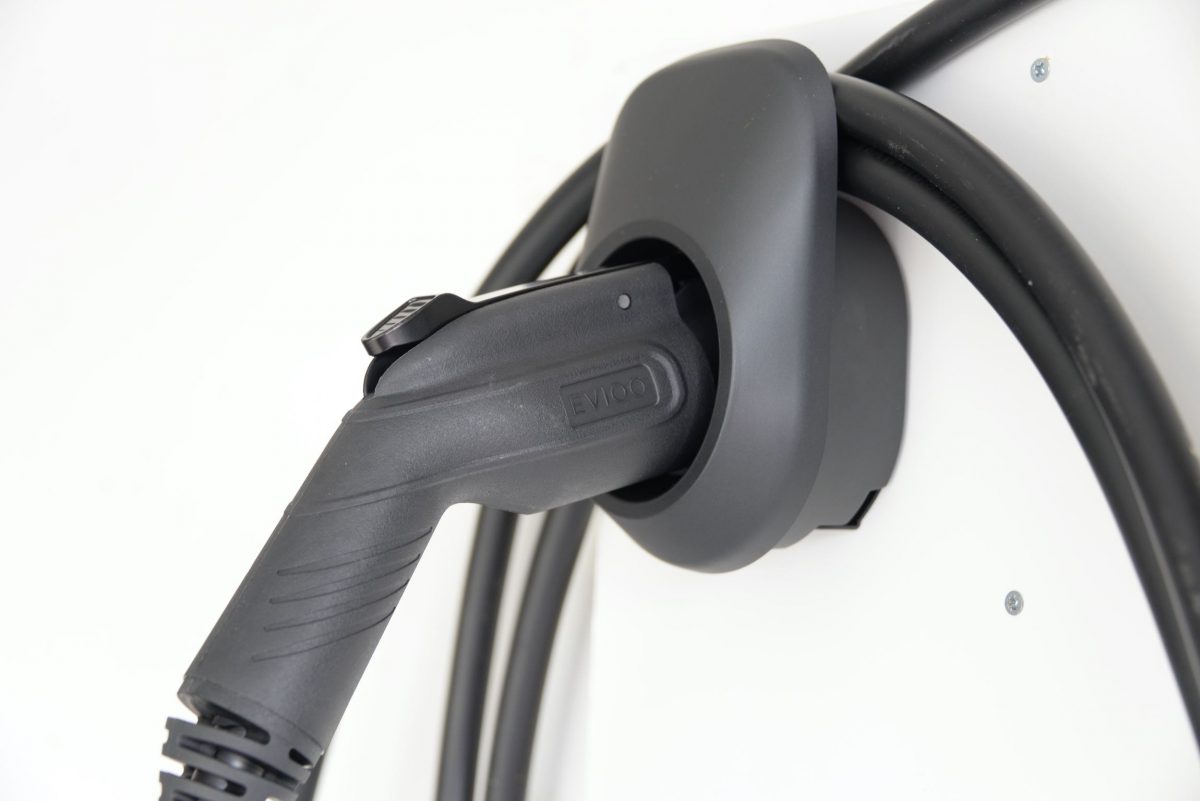
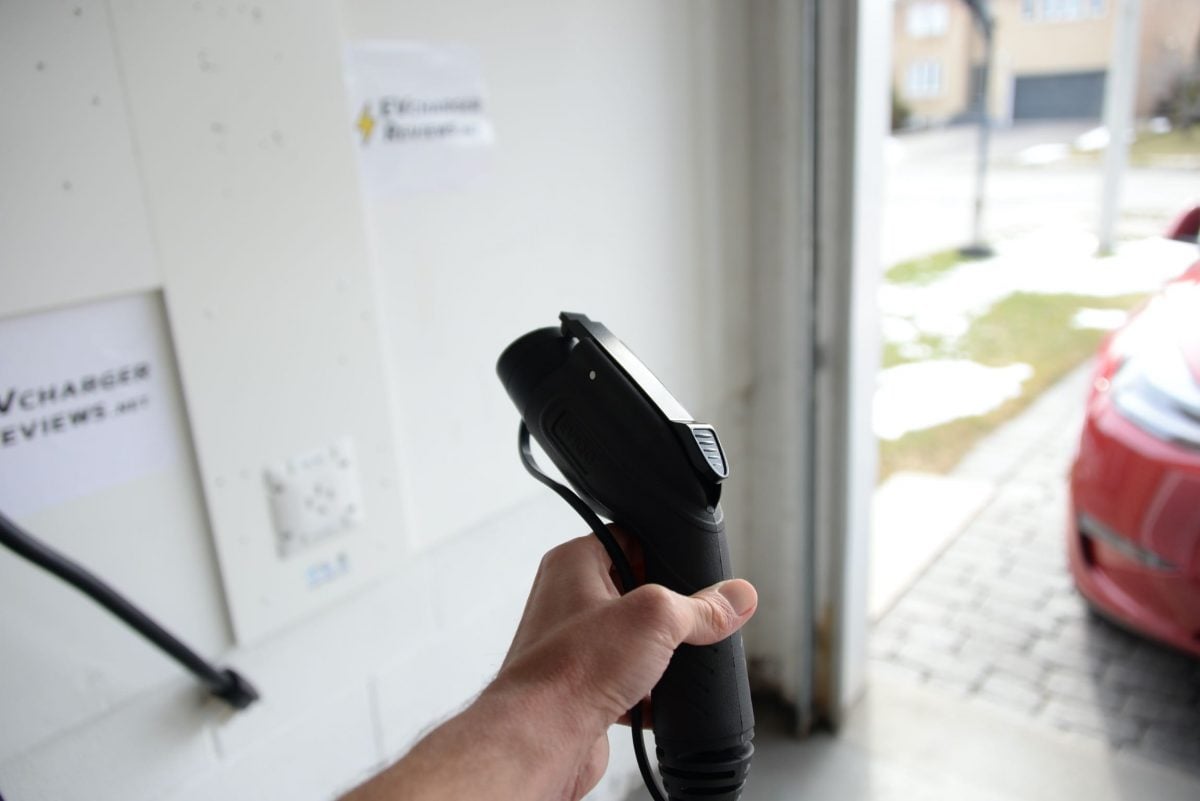
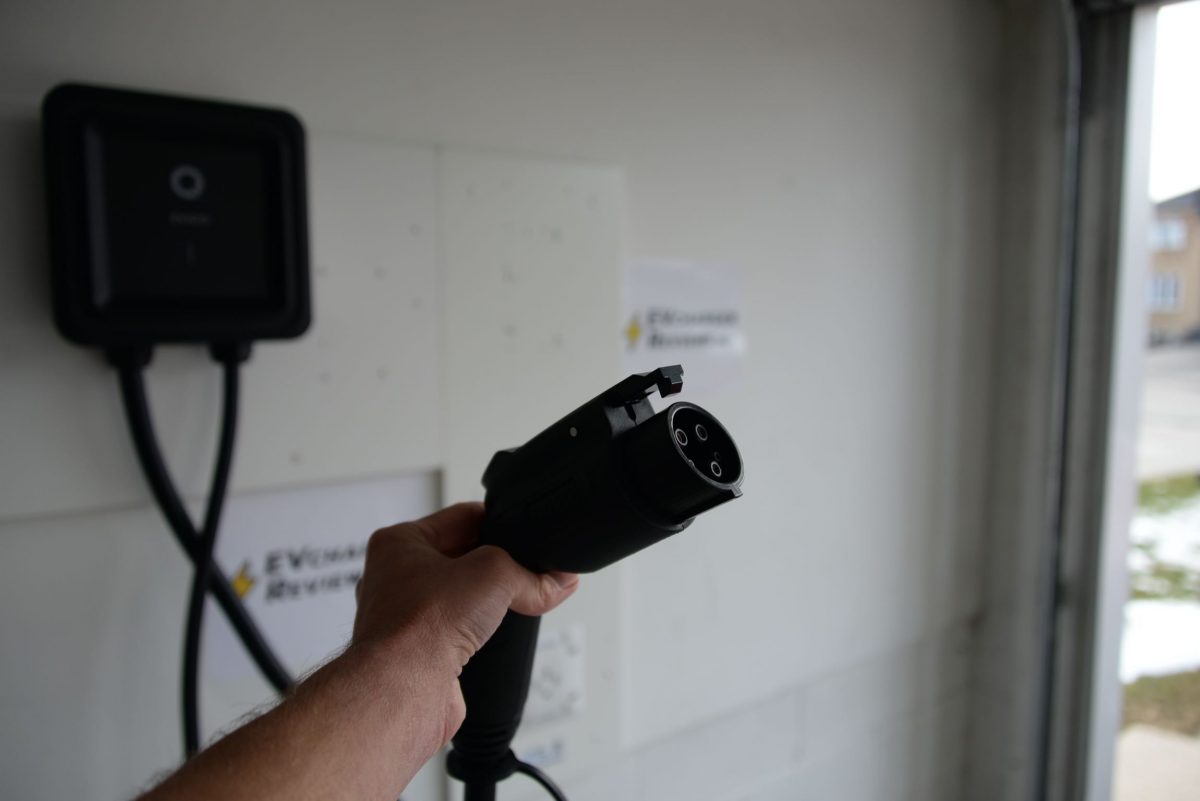
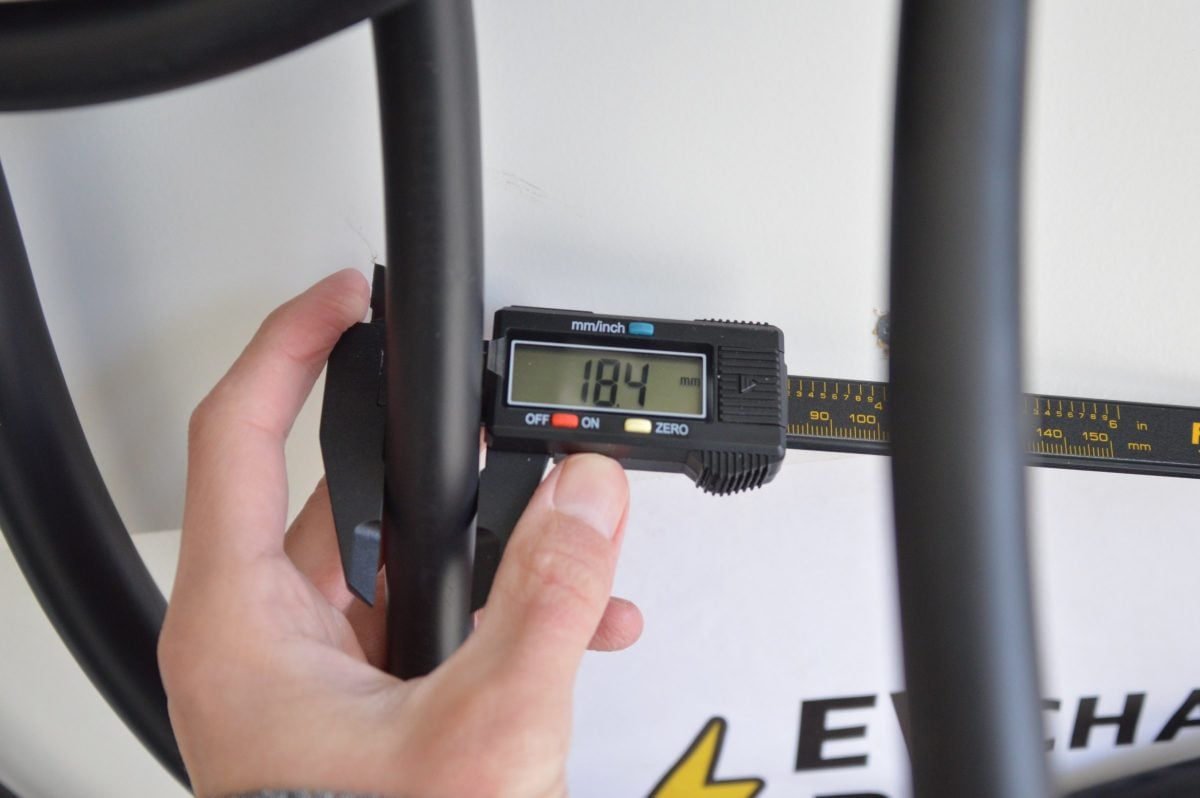
Charging Performance and App
The EVIQO charging station is set to 40 amps out of the box. This is actually a very smart decision because although the NEMA 14-50 outlet is rated for 50 amps, the electrical code requires only 80% constant load. To unlock the full 48 amps, you must have a licensed electrician hardwire the EVIQO to a circuit that is capable of at least 60 amps. Once hardwired, there is a physical switch inside the EVIQO charging station to toggle between 16, 32, 40, and 48 amp modes. The software configuration in the app will never exceed the physical switch configuration. This is a very thoughtful and flexible approach, we have seen too many cheap 48-amp NEMA 14-50 chargers from China that exceed 40 amps out of the box.
Another thing to note is that the EVIQO charger only has one input location at the bottom of the unit, while some charging stations will have a secondary knockout at the back of the device for cleaner hardwired installations.
I’ve put the EVIQO charging station through some vigorous multi-hour charging sessions, and the device performed as expected without interruptions, faults, or building excess heat. There is a significant surface area on the unit to dissipate heat, and due to the generous gauge wiring used in the cord, it was only mildly warm to the touch after 30kWh+ transferred. I will retest and update this article during the summer heat, but I do not expect any thermal throttling or performance issues.
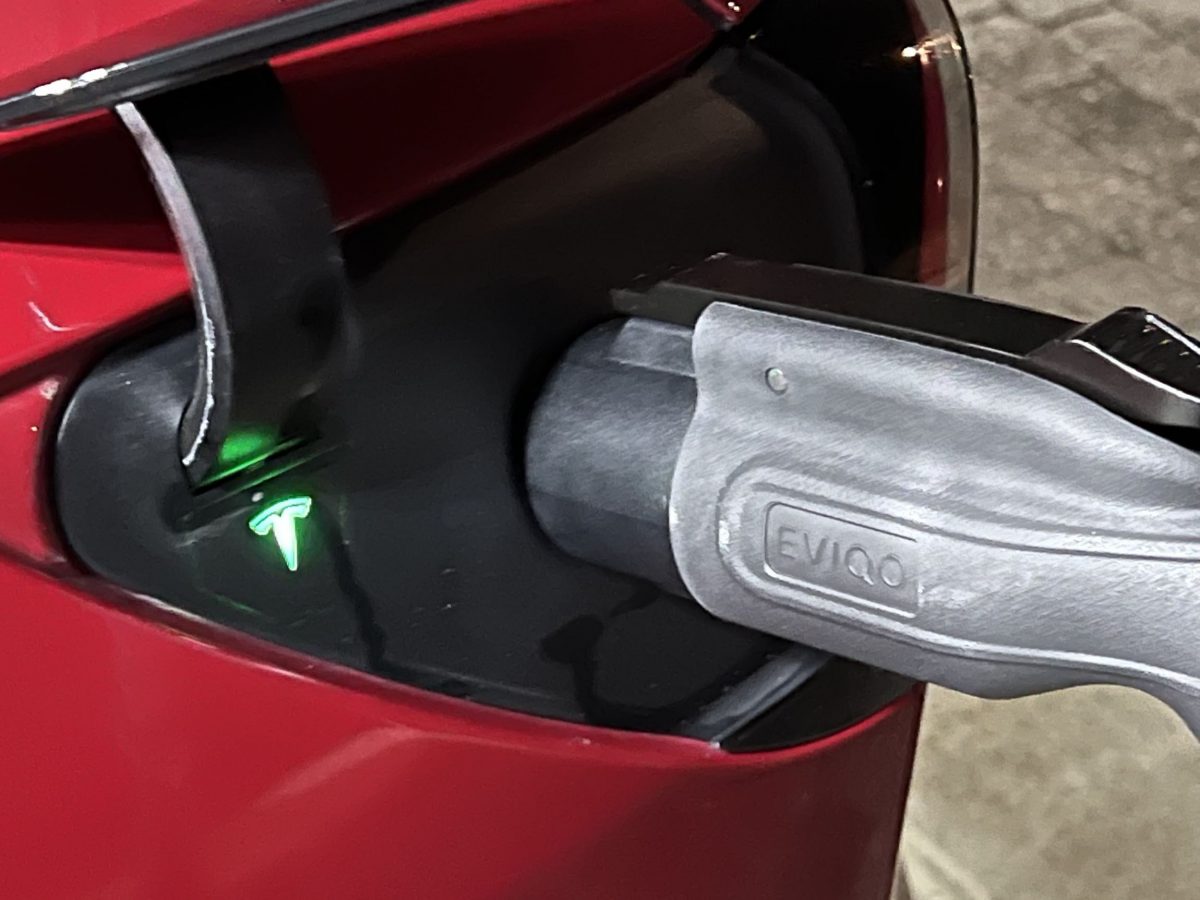
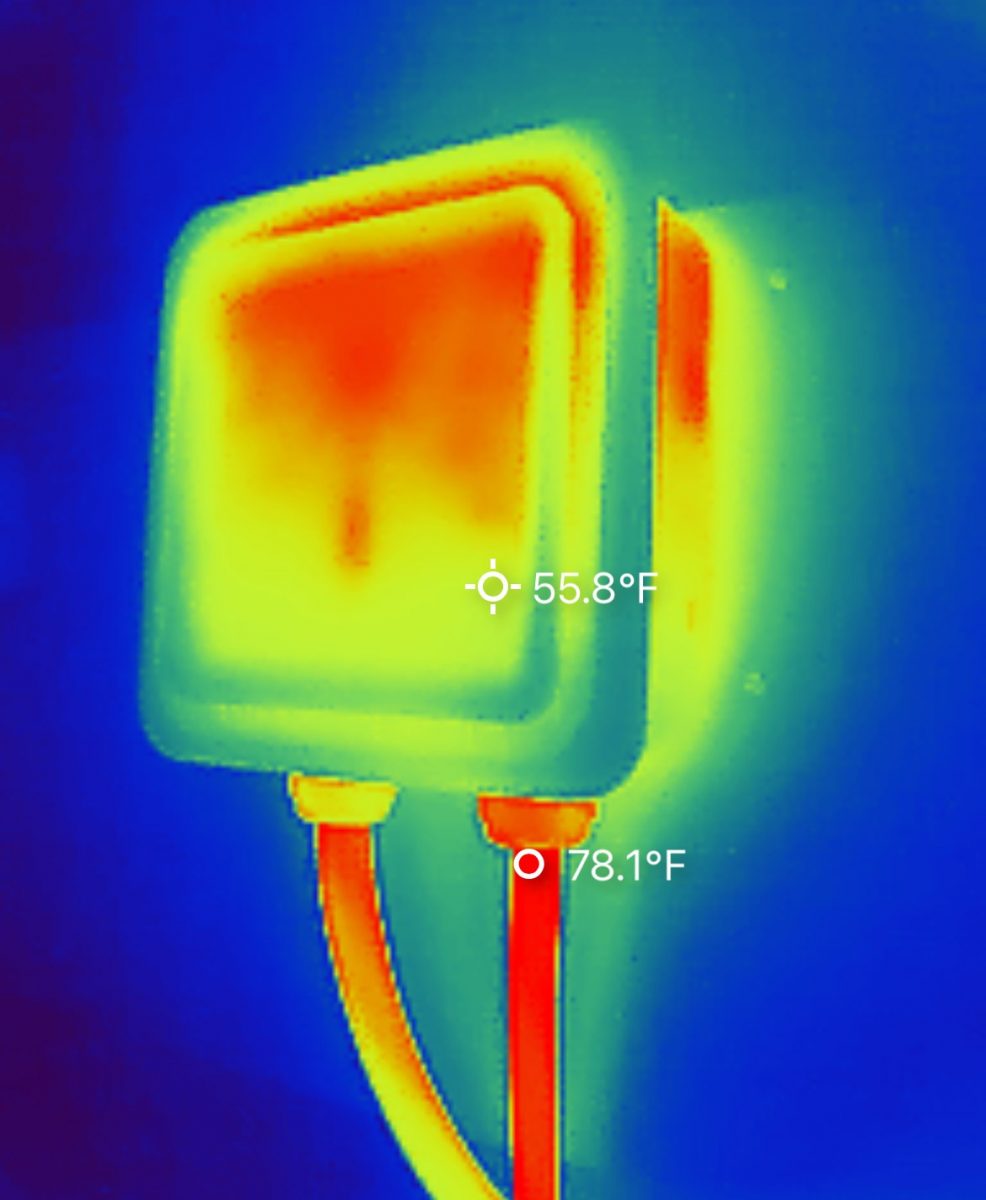
The EVIQO charging station comes with Bluetooth and Wi-FI connectivity for monitoring and smart features. The setup with the EVIQO app was simple, and I was up and running in minutes. Bluetooth is used for the initial pairing, but the unit connects to the Internet over Wi-FI after the initial setup.
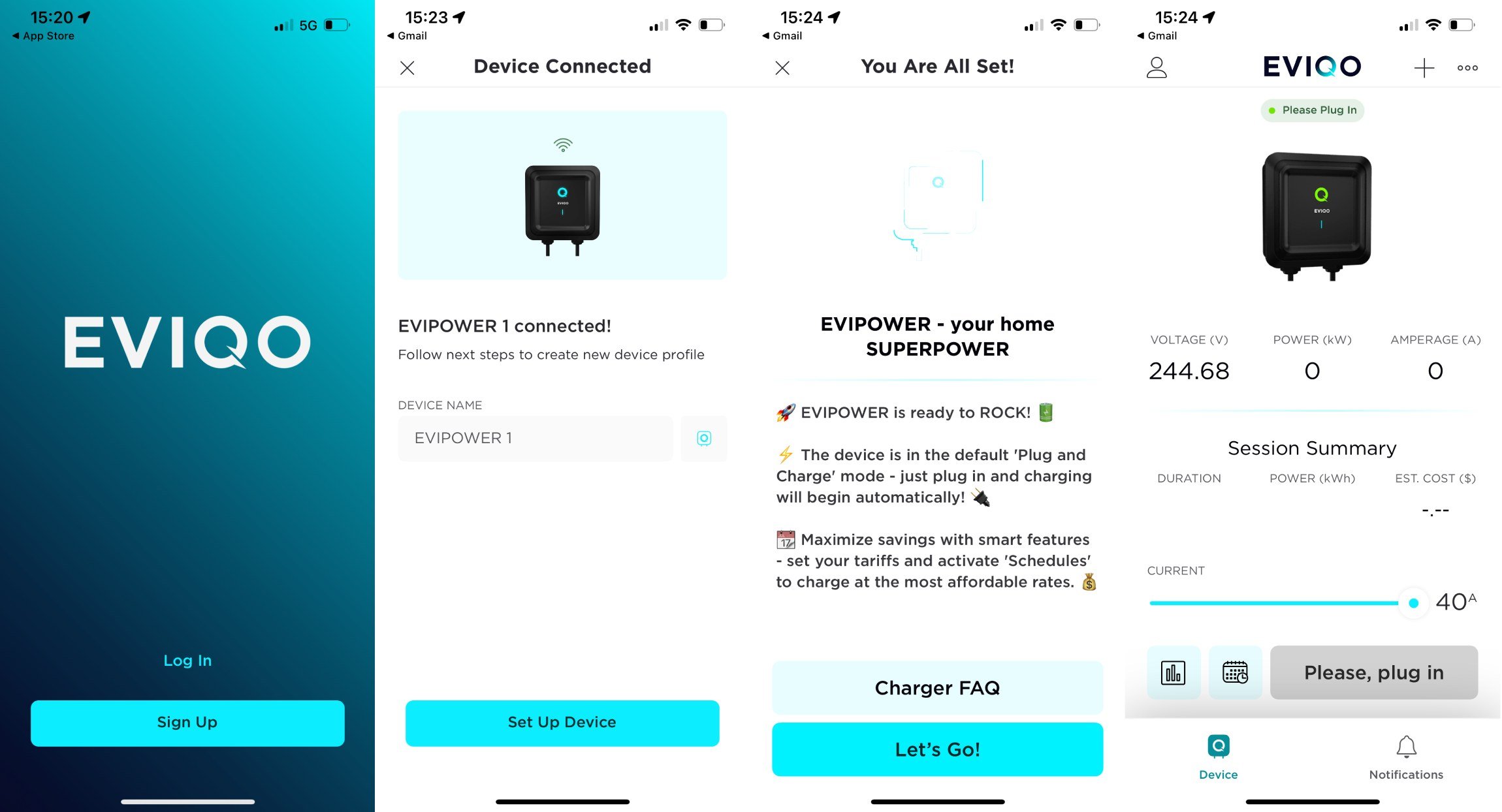
The app is among the best in class, in my opinion. I’ve recently written about the three different approaches to making an EV charger app, and EVIQO is firmly in the “dedicated app” category. The app is focused entirely on managing the EVIQO home charging station and serving the user with a wealth of information and configuration options.
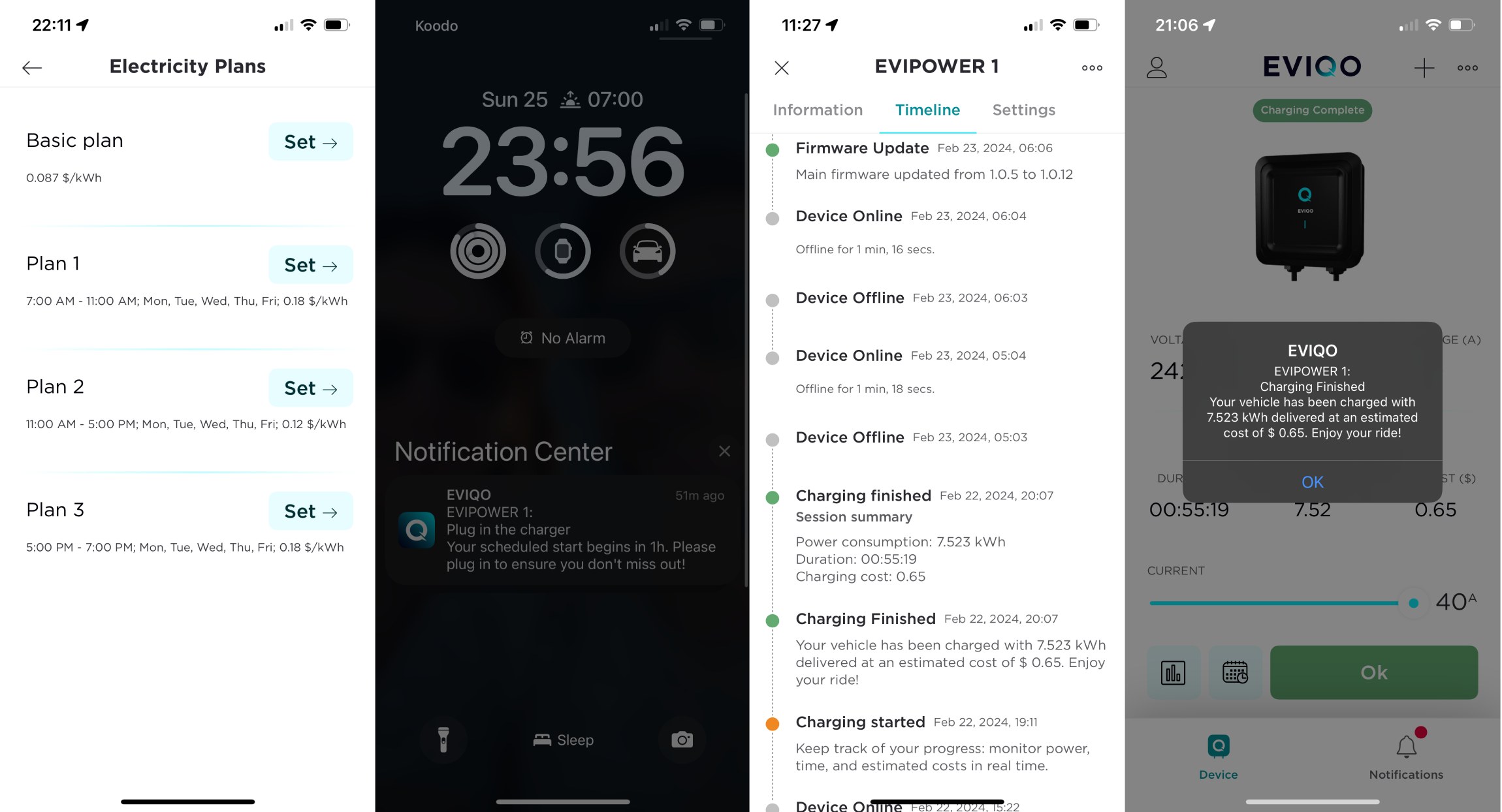
For example, replicating my time-of-use electricity plan was easy in the EVIQO app. I was able to set the off-peak rate as my default, and EVIQO has three slots for other rates. My plan has an off-peak period, and in addition, I have two mid-peak and one on-peak rate. Few other EV charger apps can accommodate four distinct periods in a 24-hour cycle. This helps make EV charging cost estimates more realistic and correct within the app.
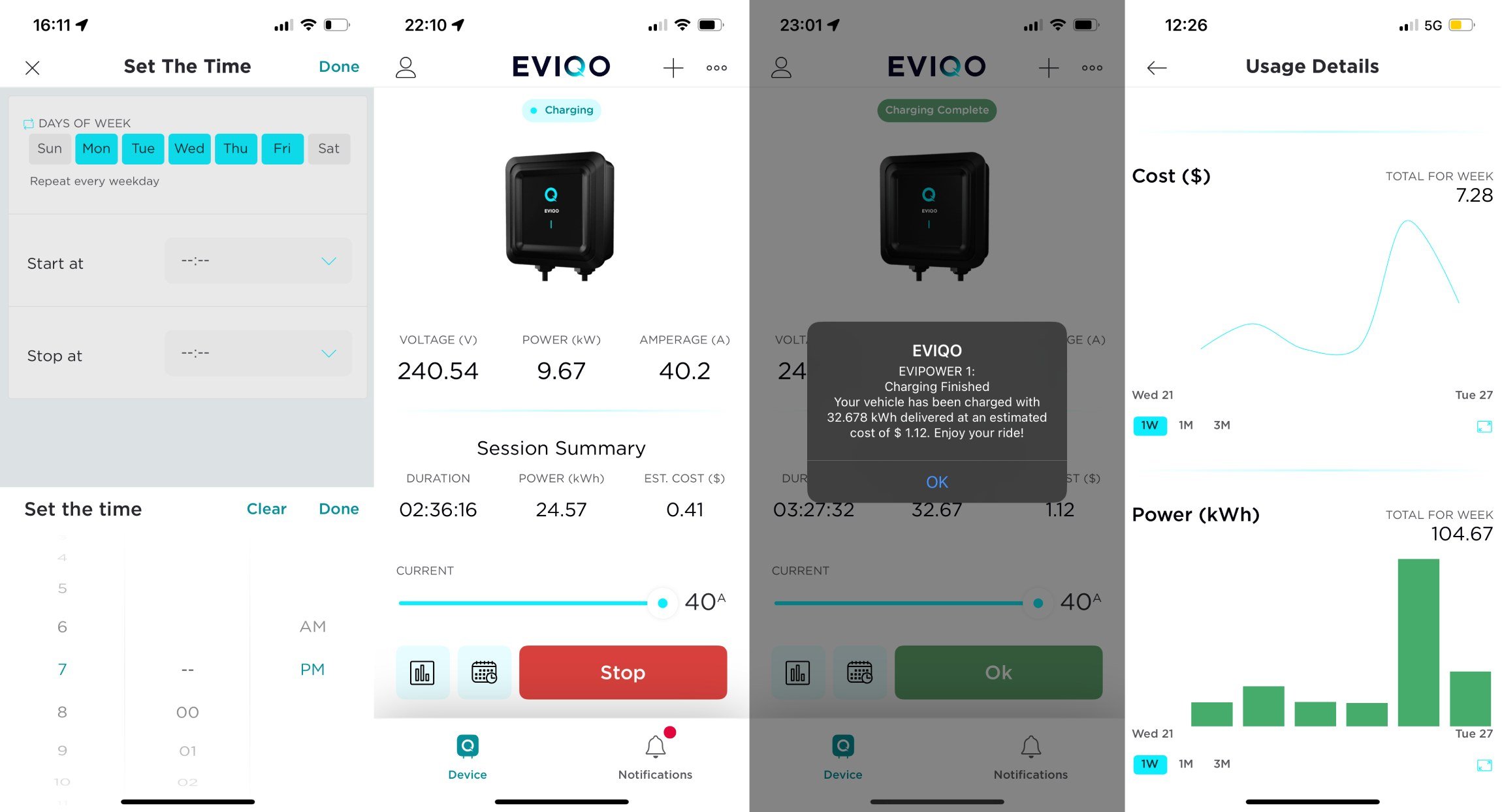
Scheduling is also a high point of the EVIQO app. Three programmable schedules can be toggled on/off at any time. Schedules are granular to specific days of the week, and schedules can even have limited power modes (in amps) if you want to charge slower when electricity is more expensive, for example. An additional delay start timer that can begin a charging session a set number of hours after plugging in.
Overall, the app demonstrates a high degree of polish and understanding of user needs.
Conclusion
The EVIQO Level 2 EV charger is easy to recommend for someone looking for a smart connected charging station with flexible installation/configuration options, and comprehensive charging cost reporting. At 48 amps, it is able to charge most EVs at their full charging speeds, and the cord & J1772 connector combo look like they are built to last. This is one of my favorite charging stations in recent memory, and we will be keeping it in our facility for longer-term testing.
Shopping Options
Full Review Gallery
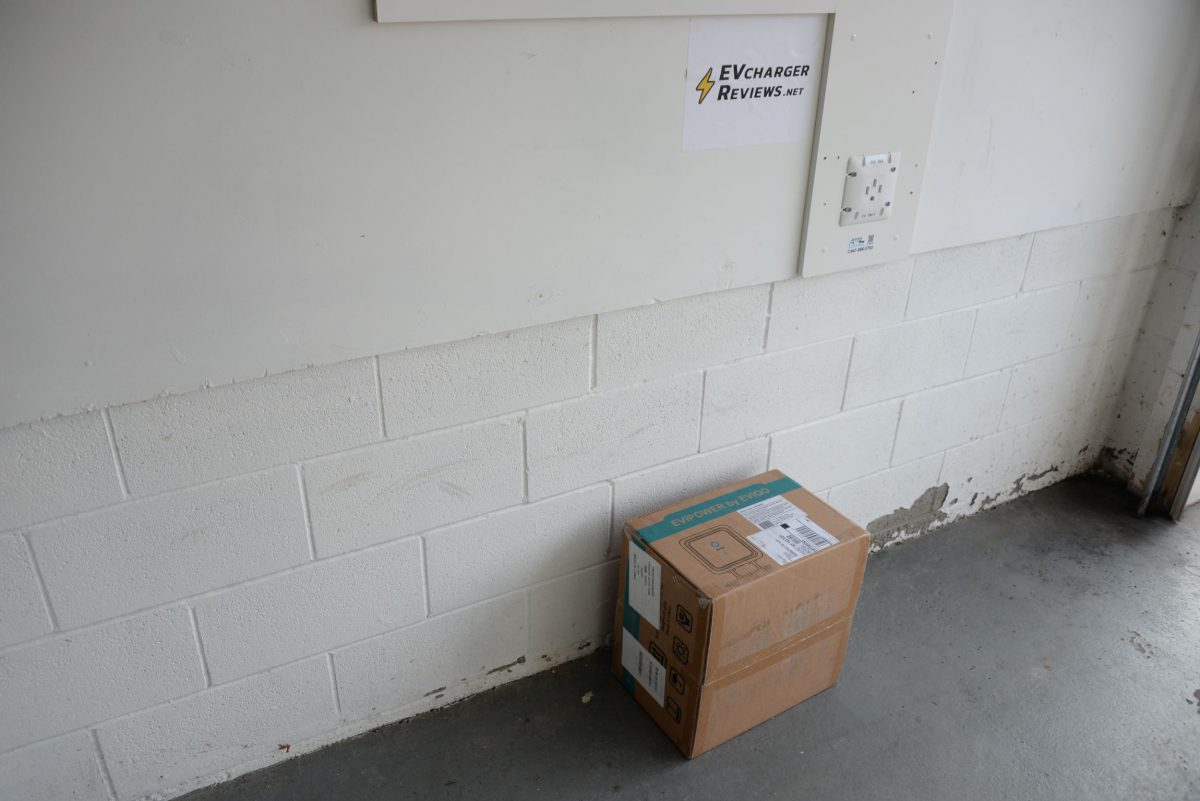
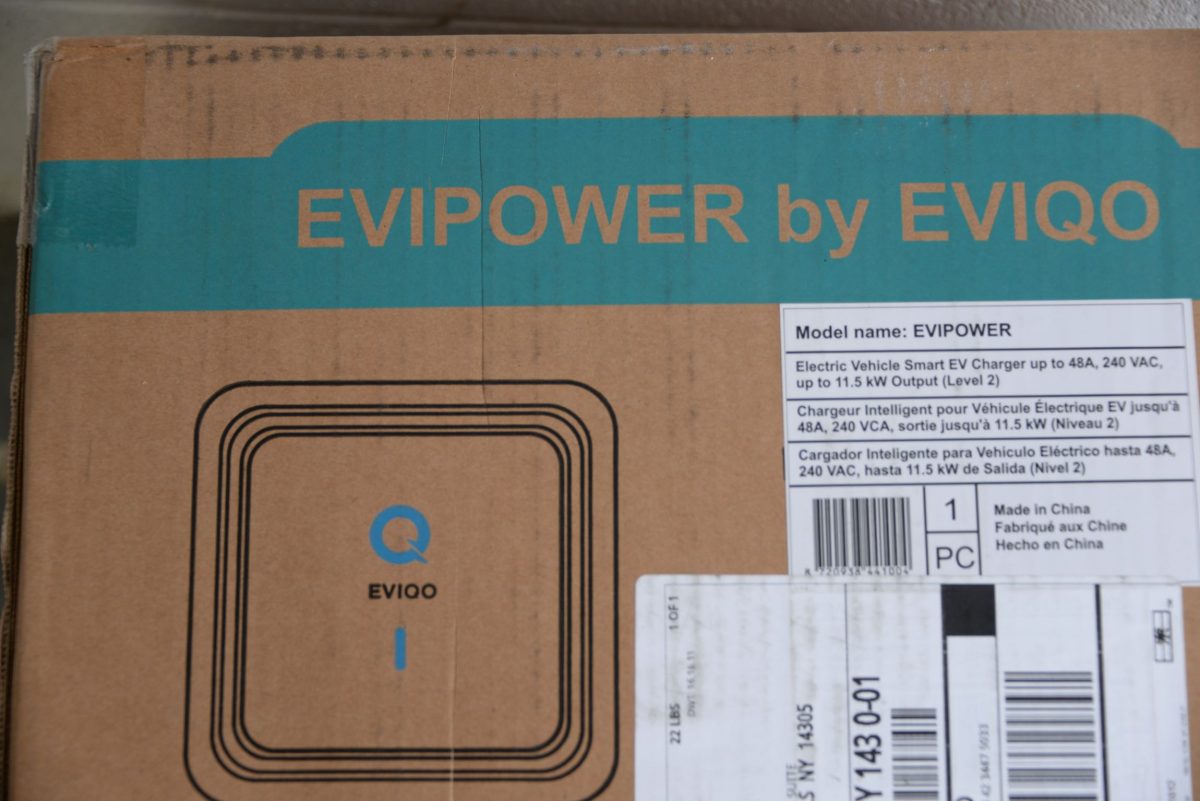
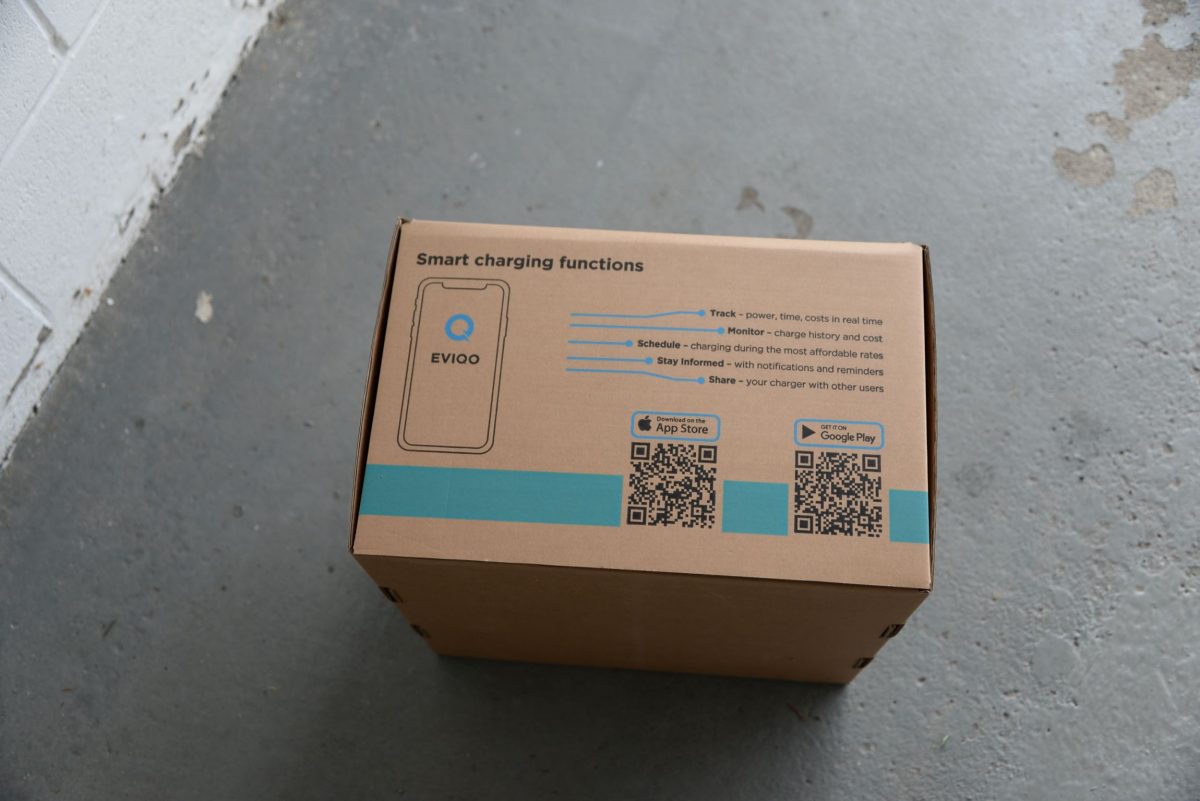
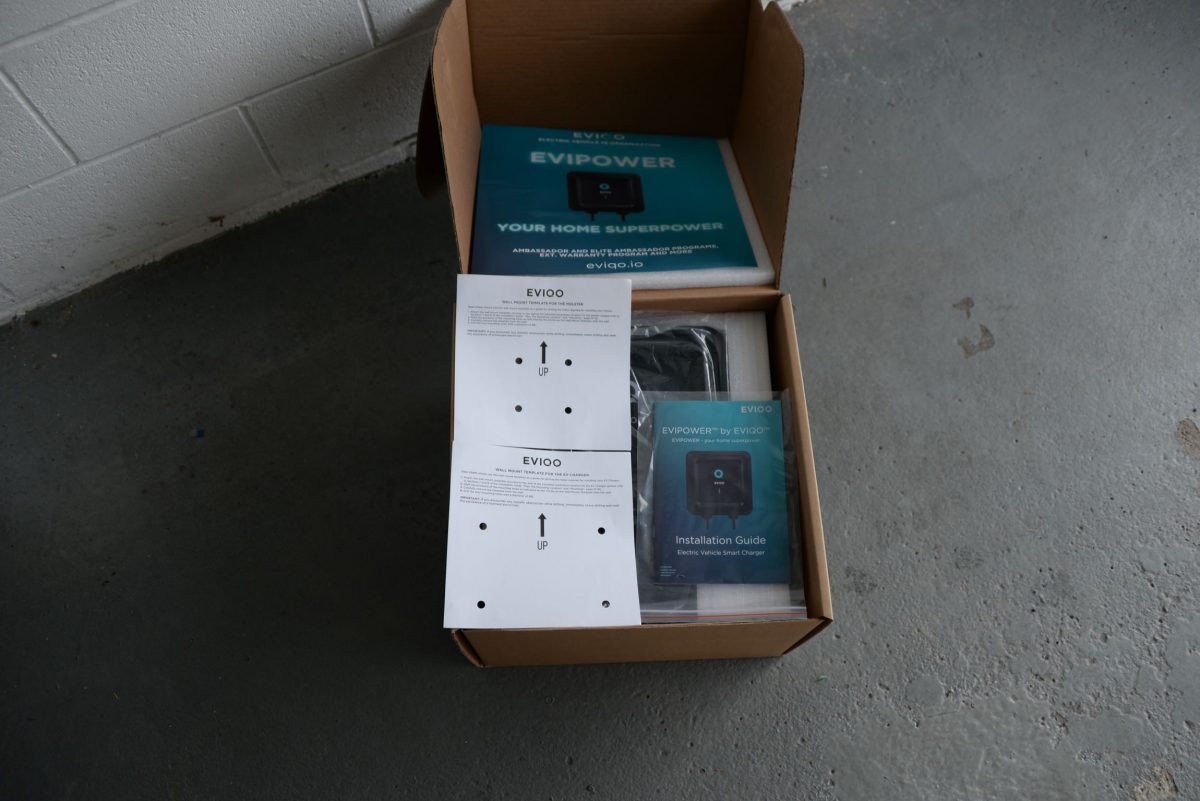
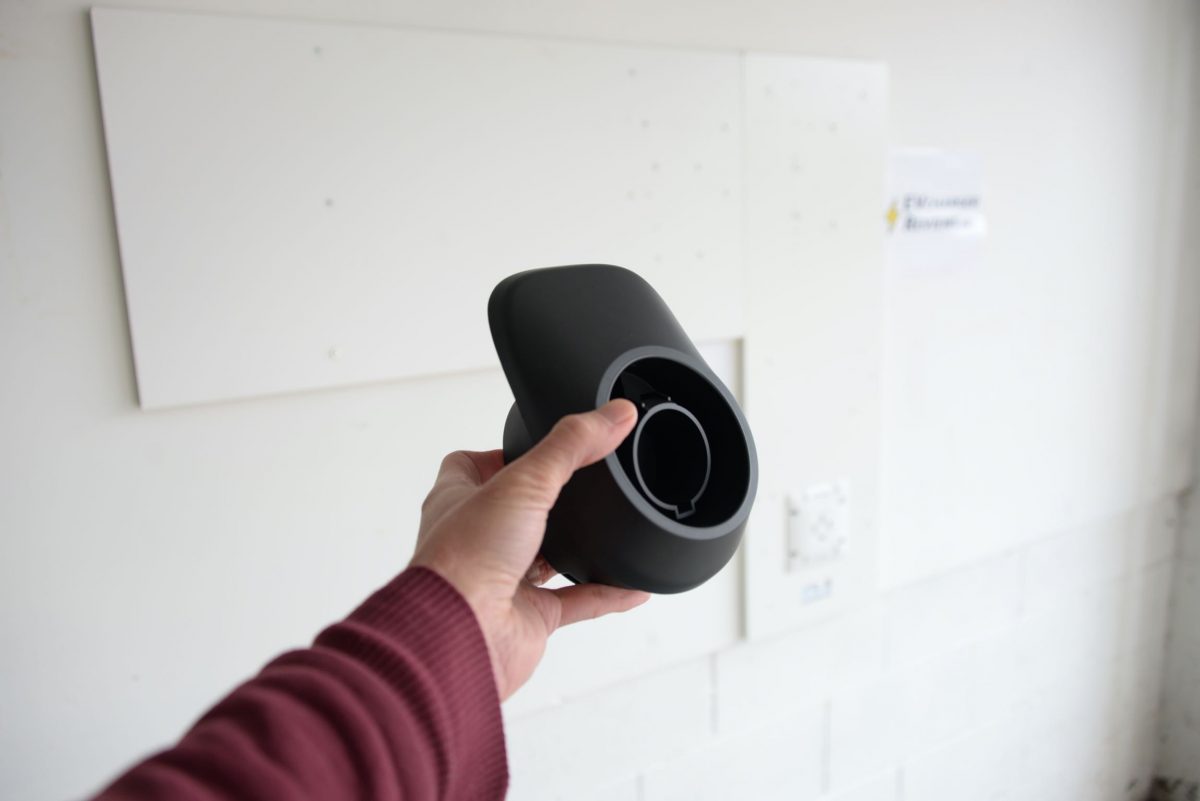

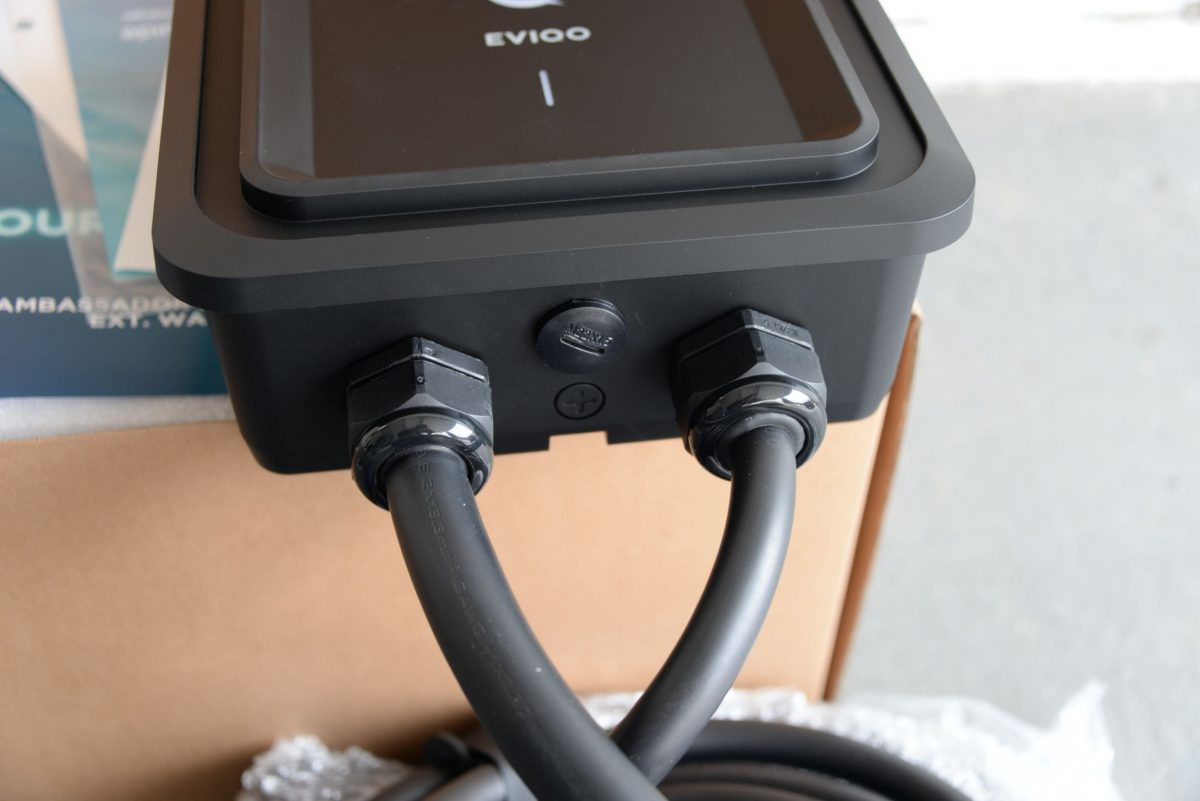
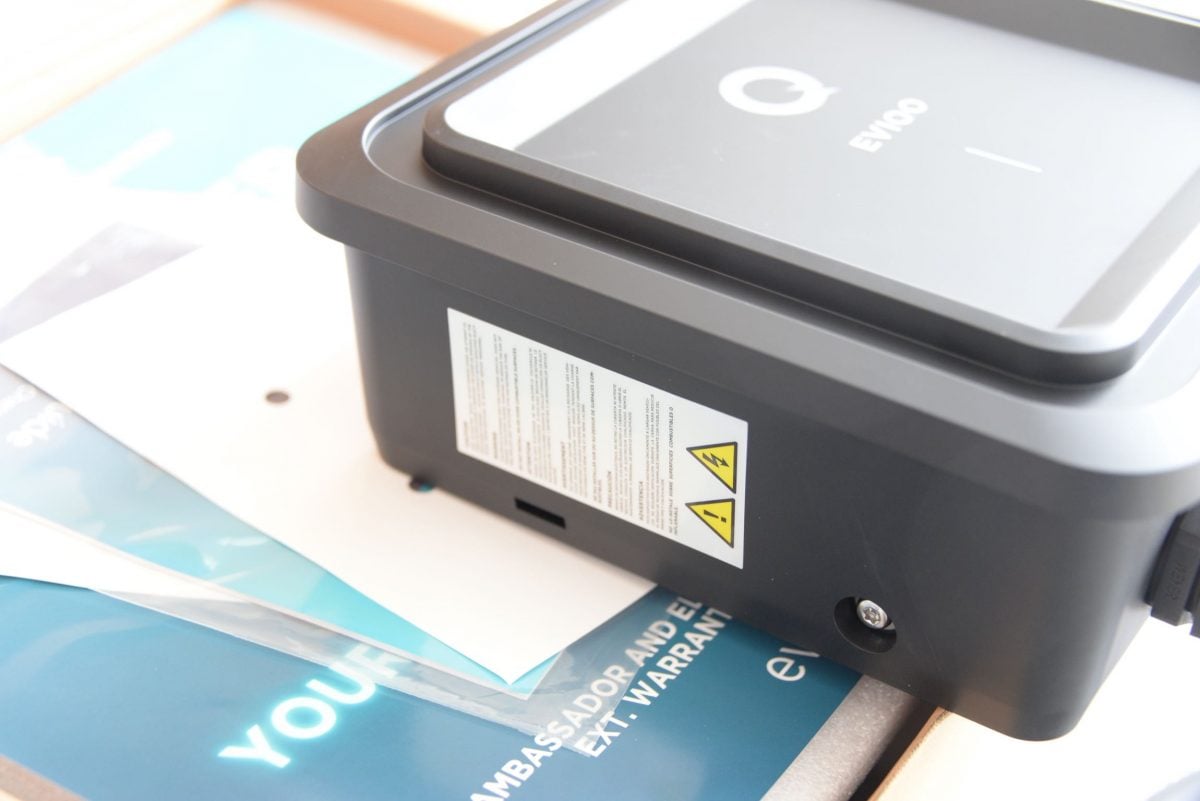
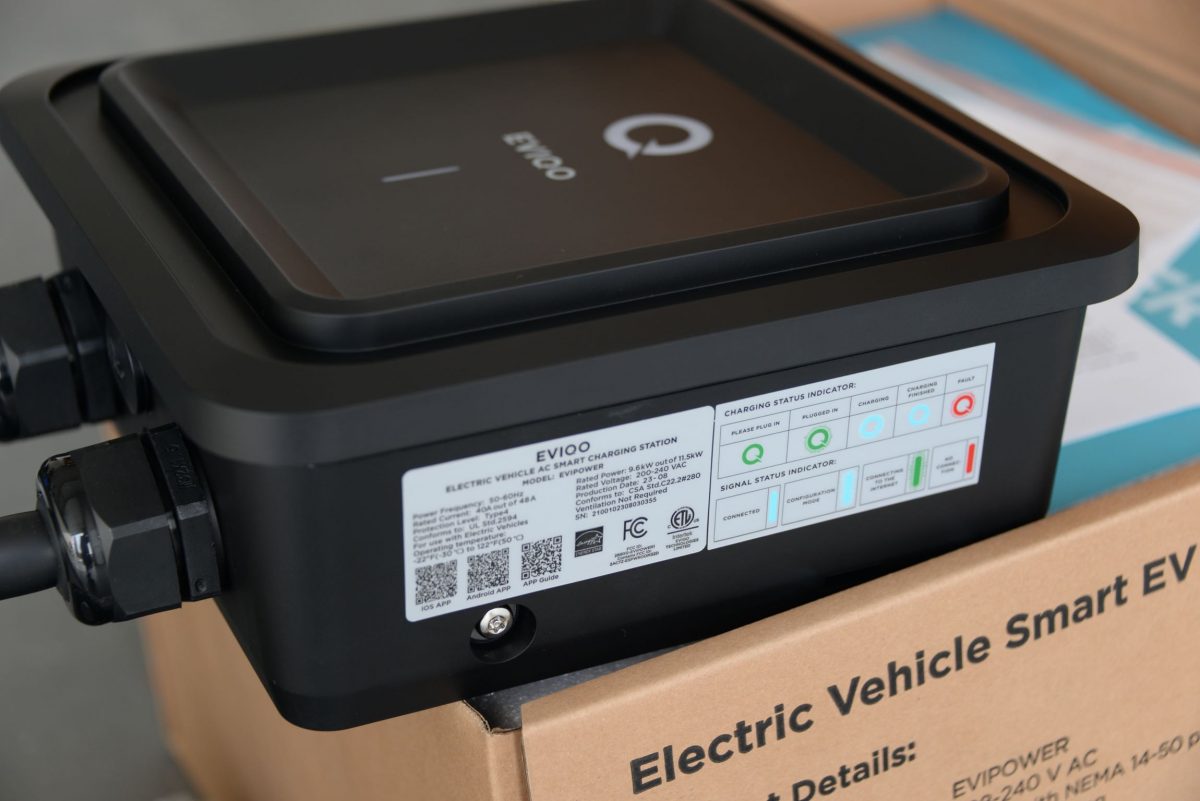
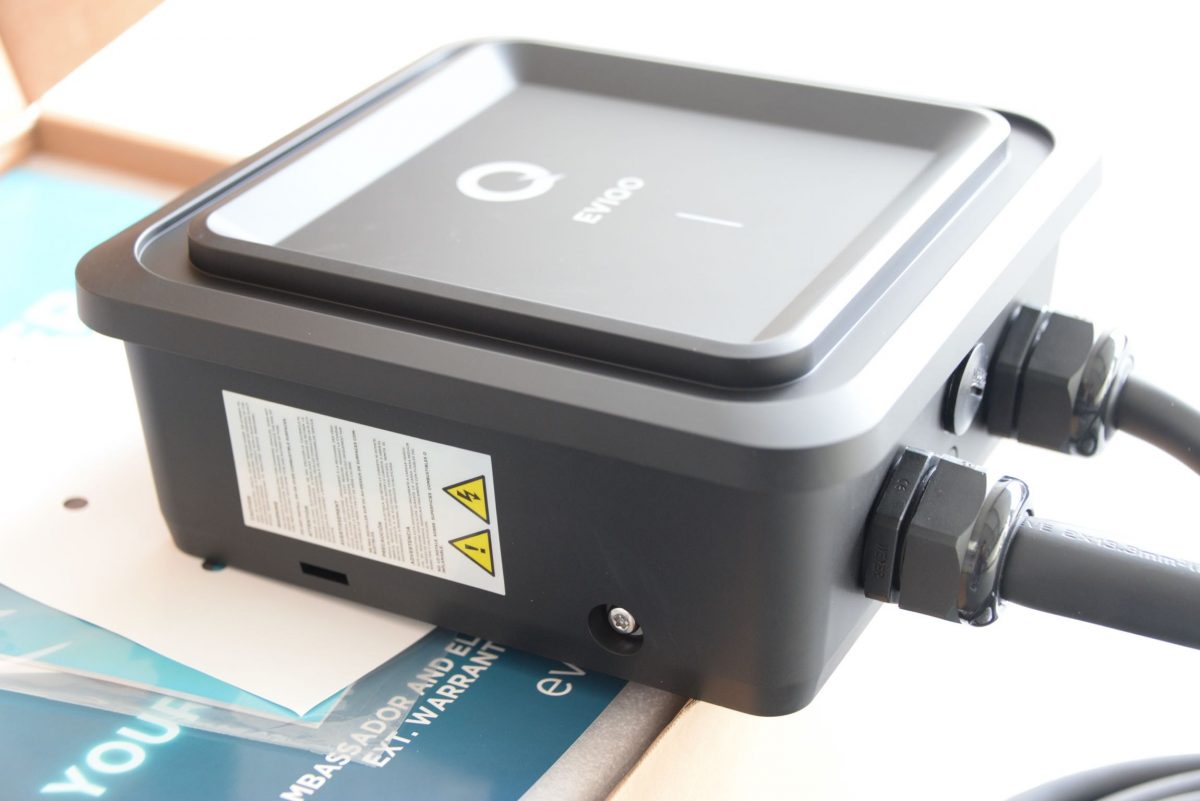
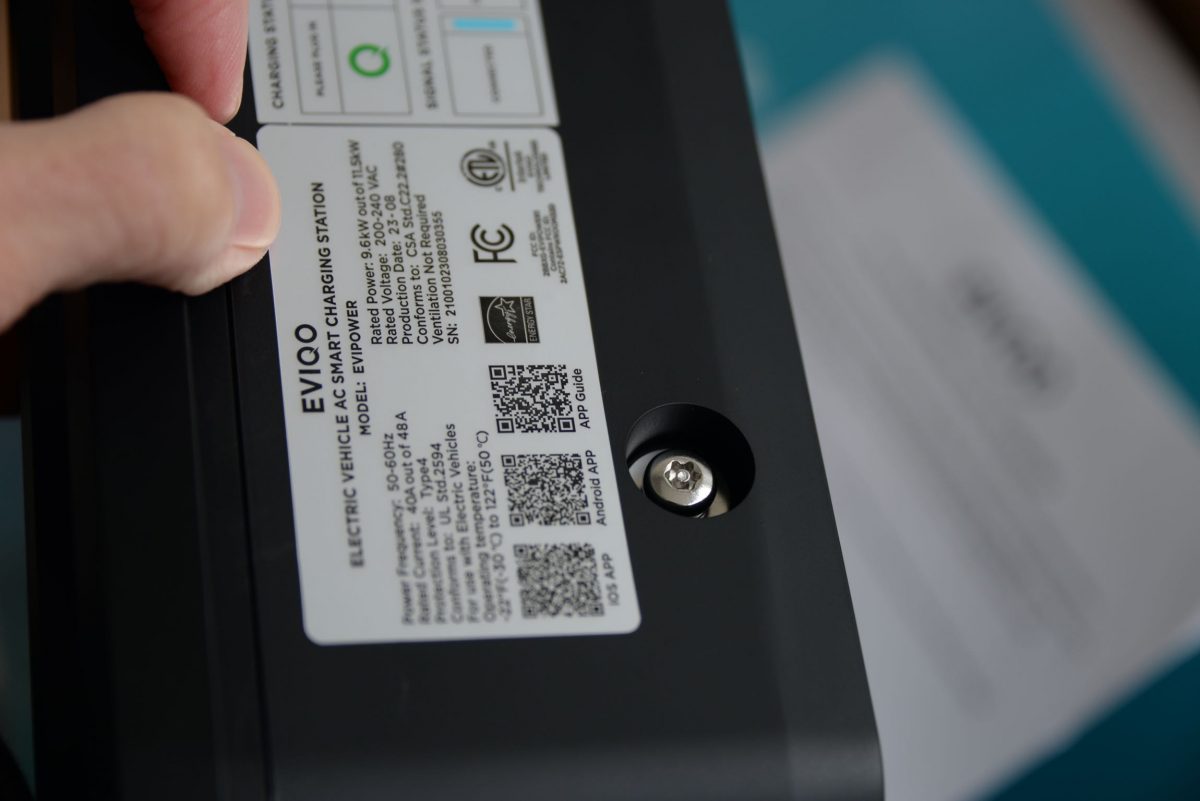

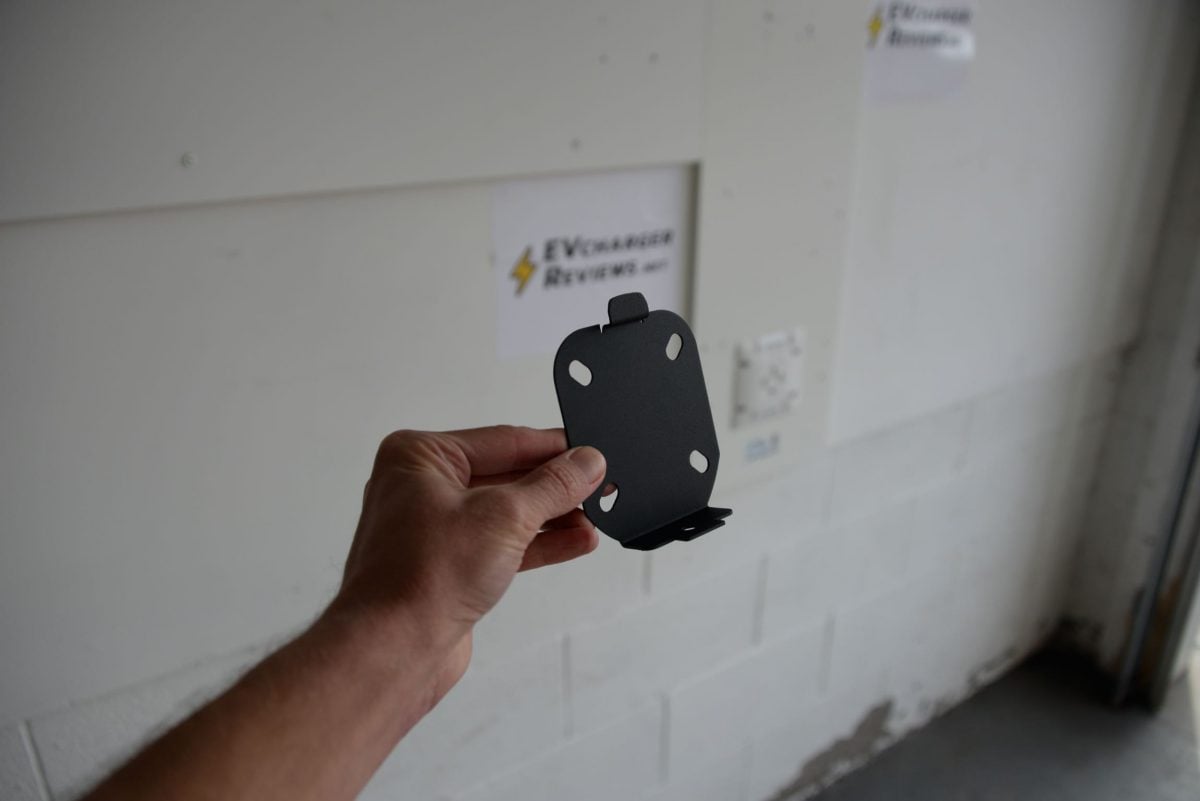
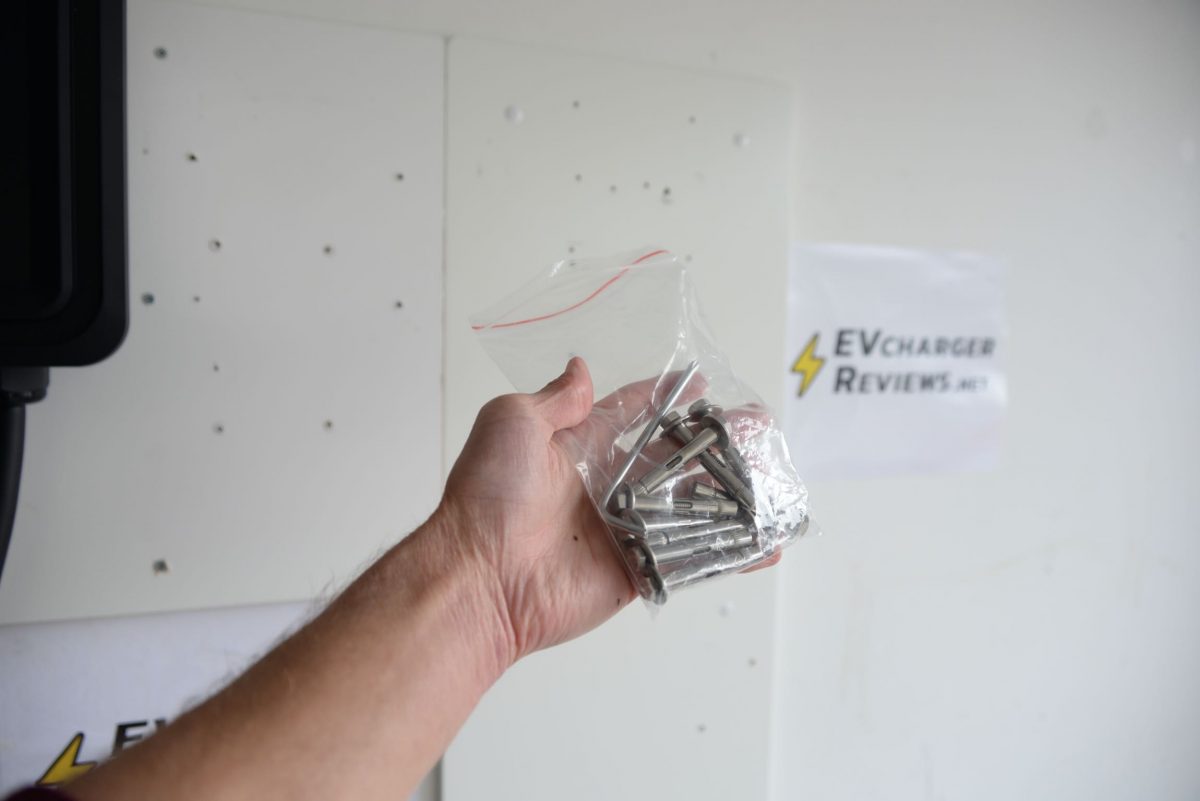
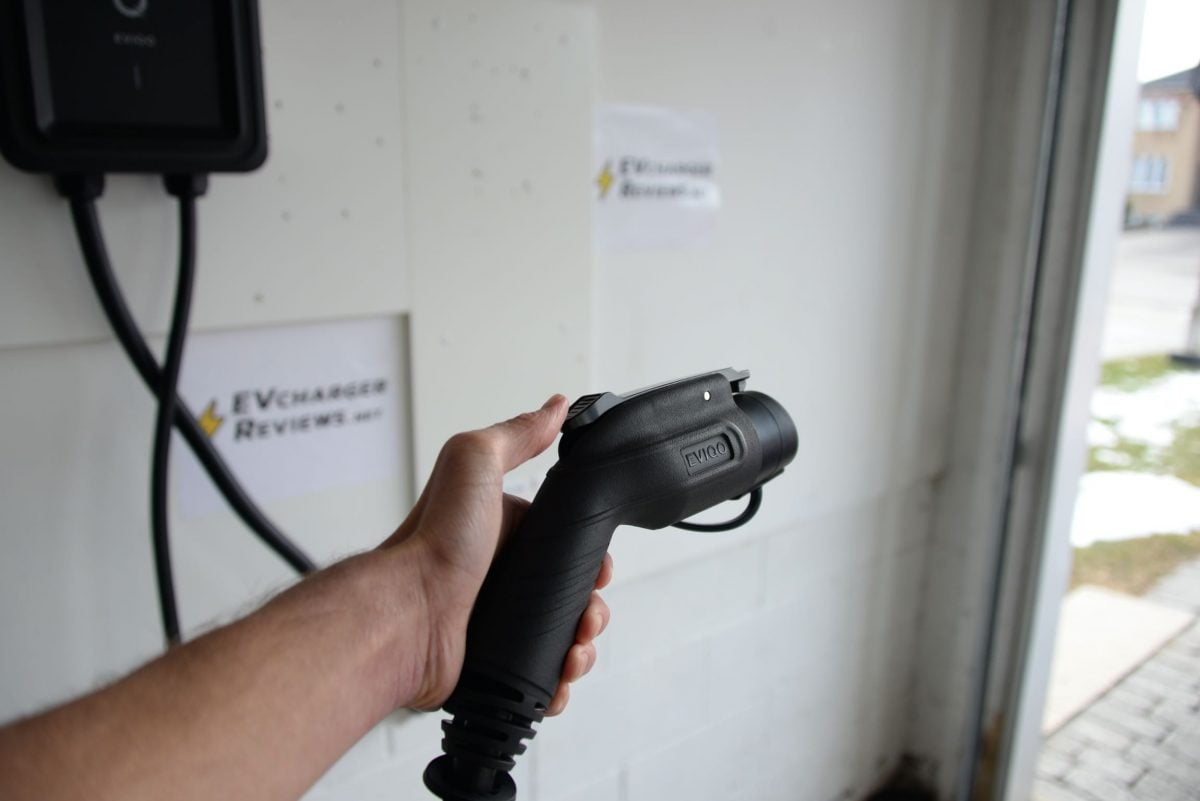


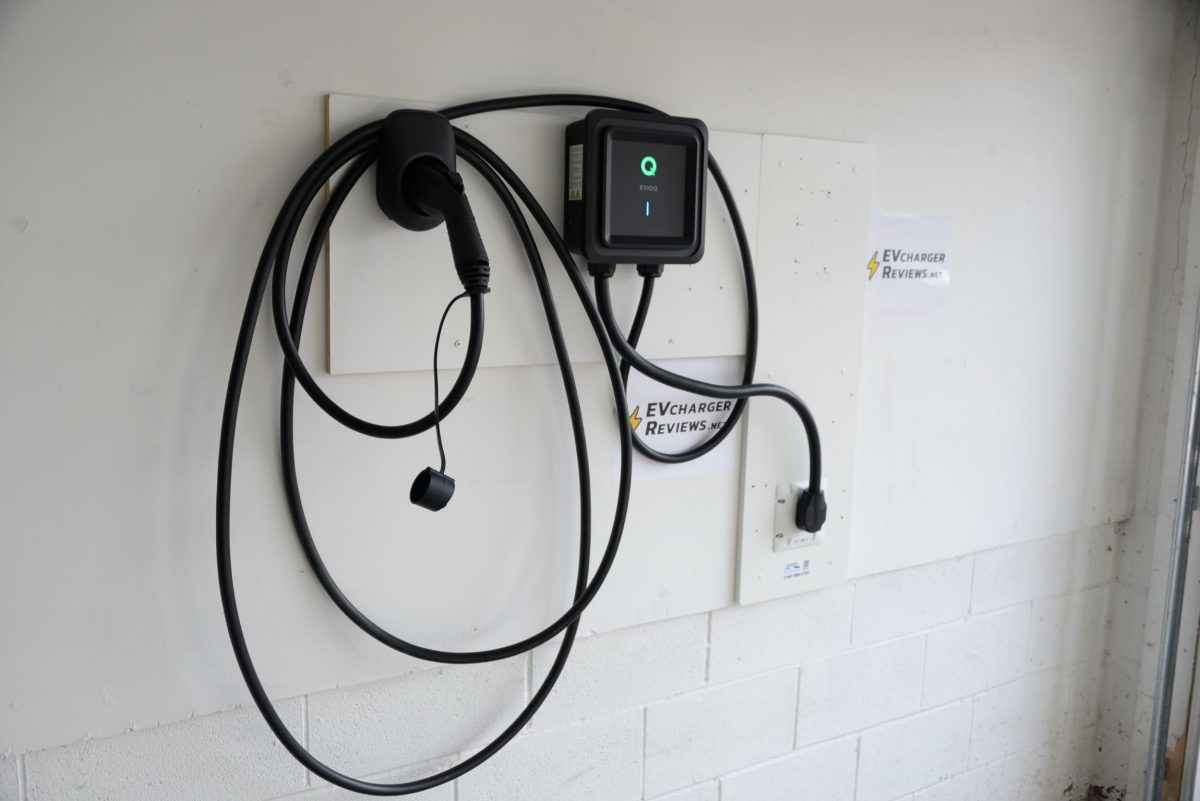

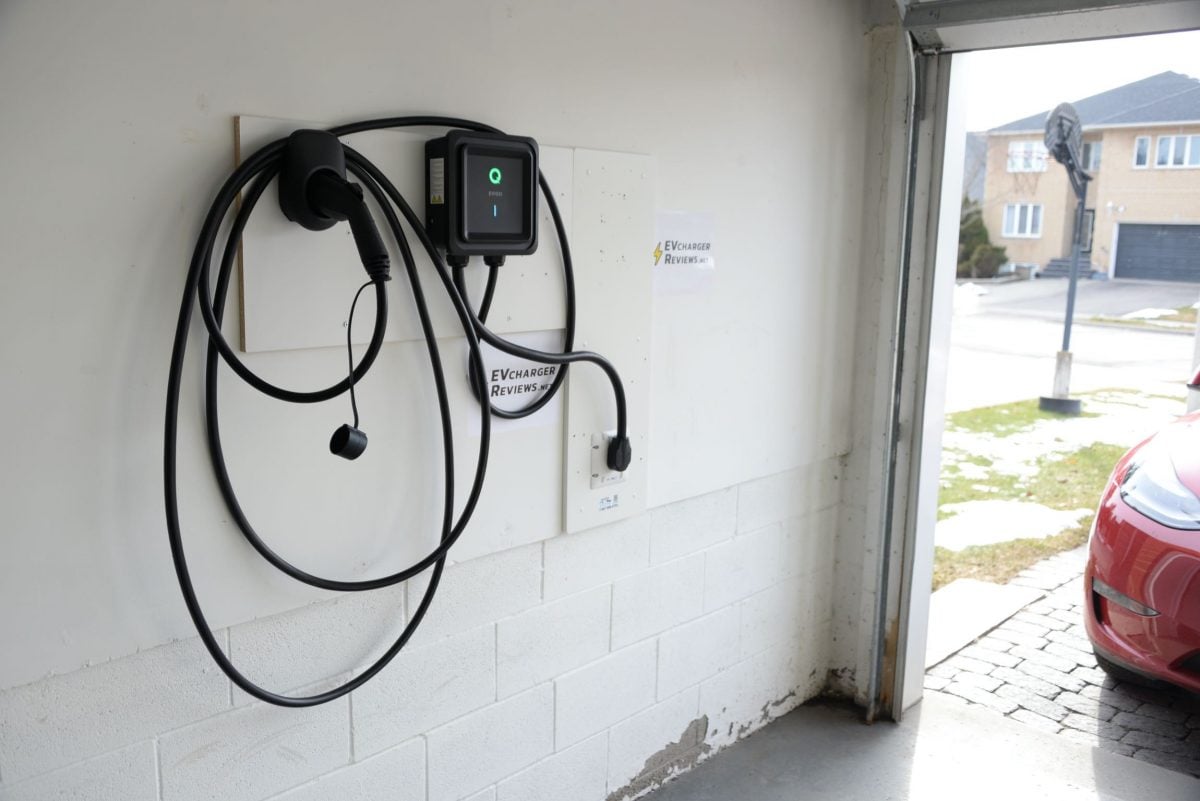
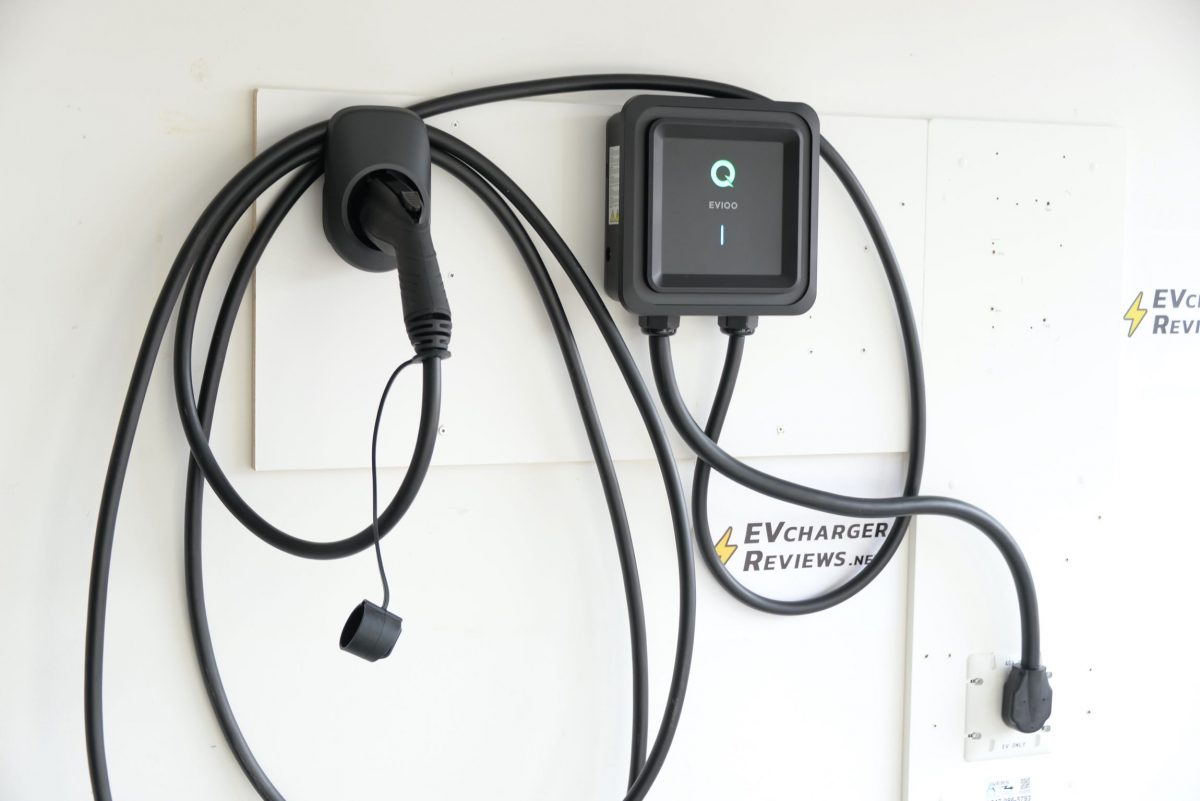
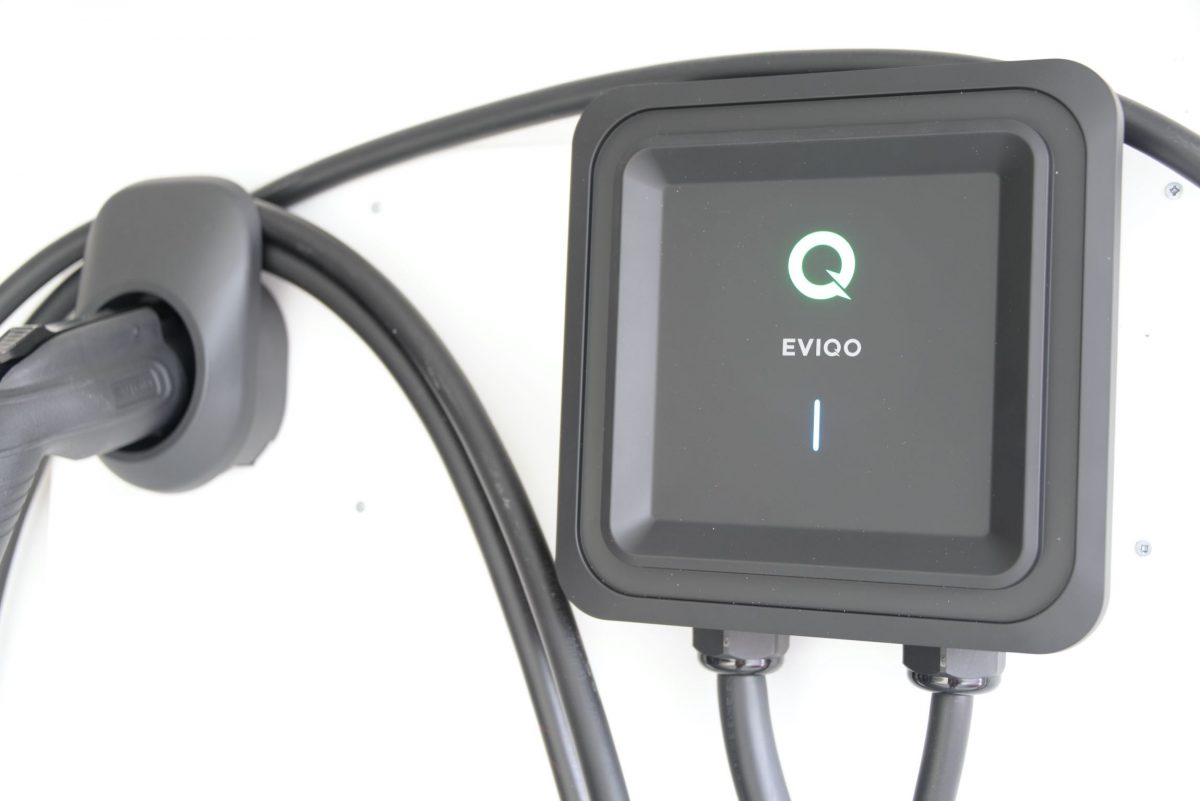

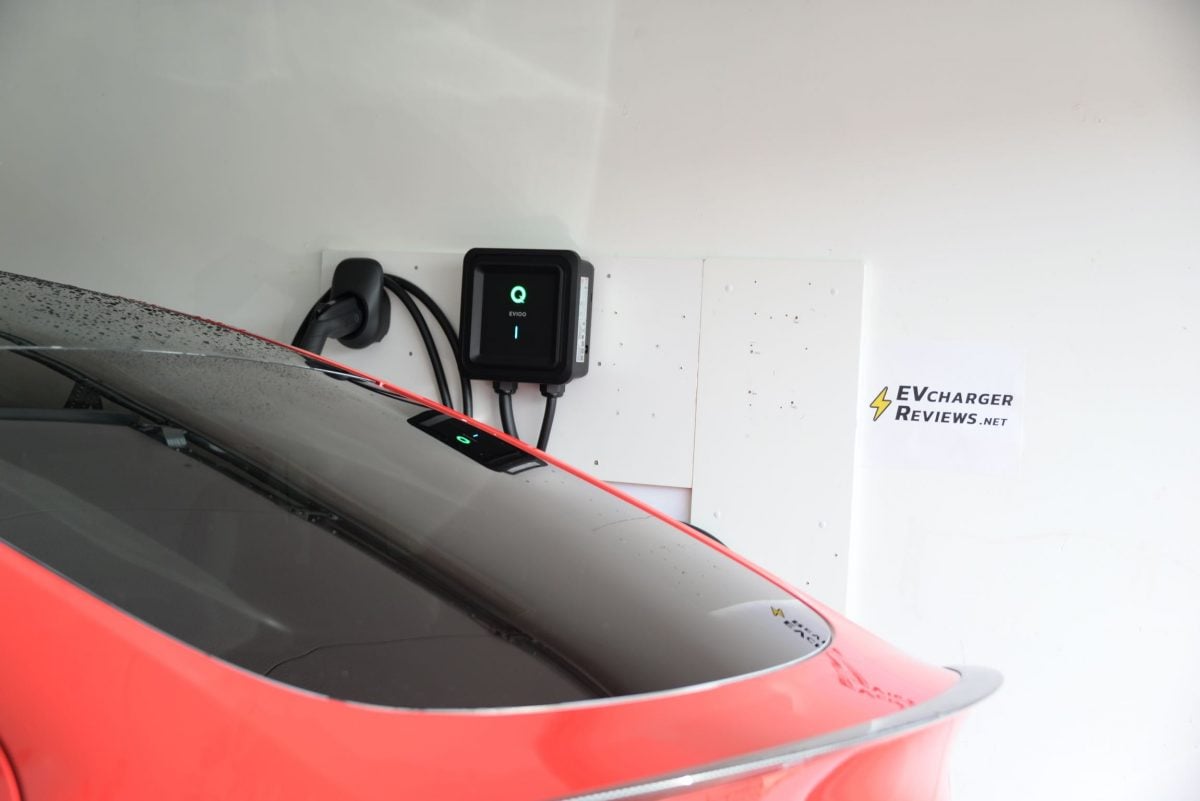
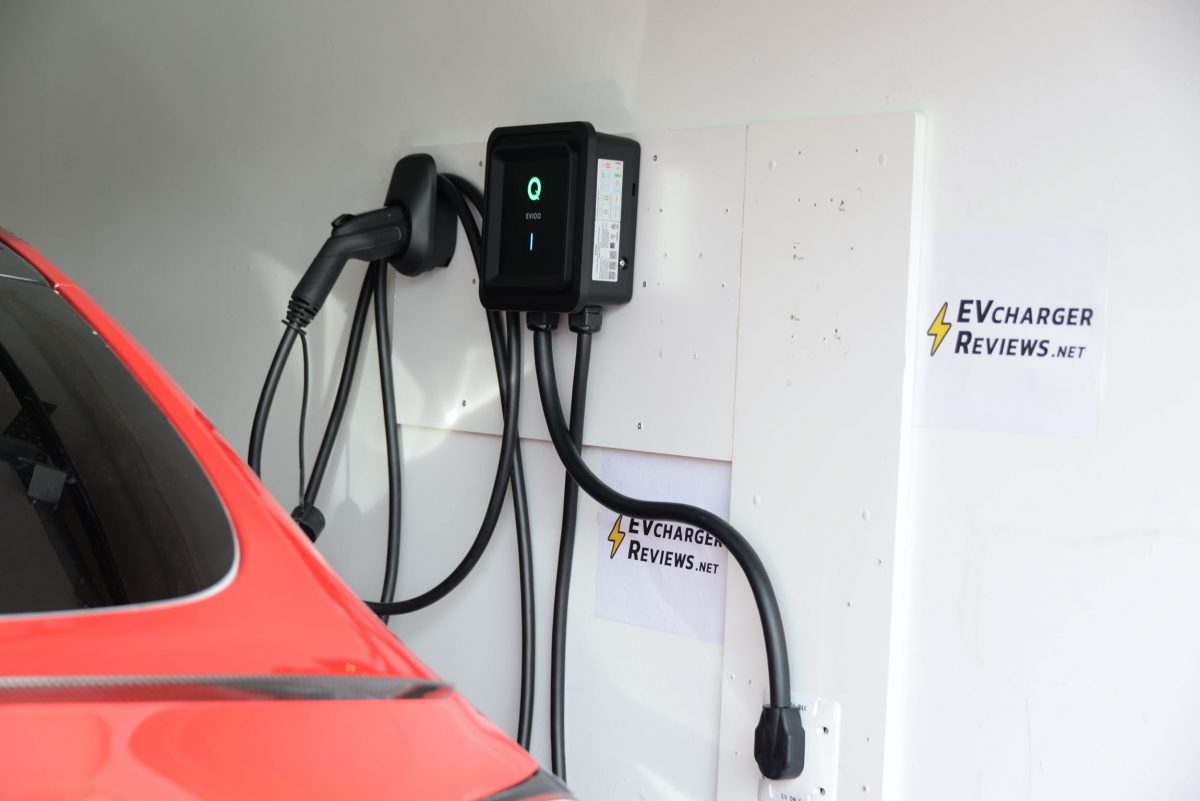


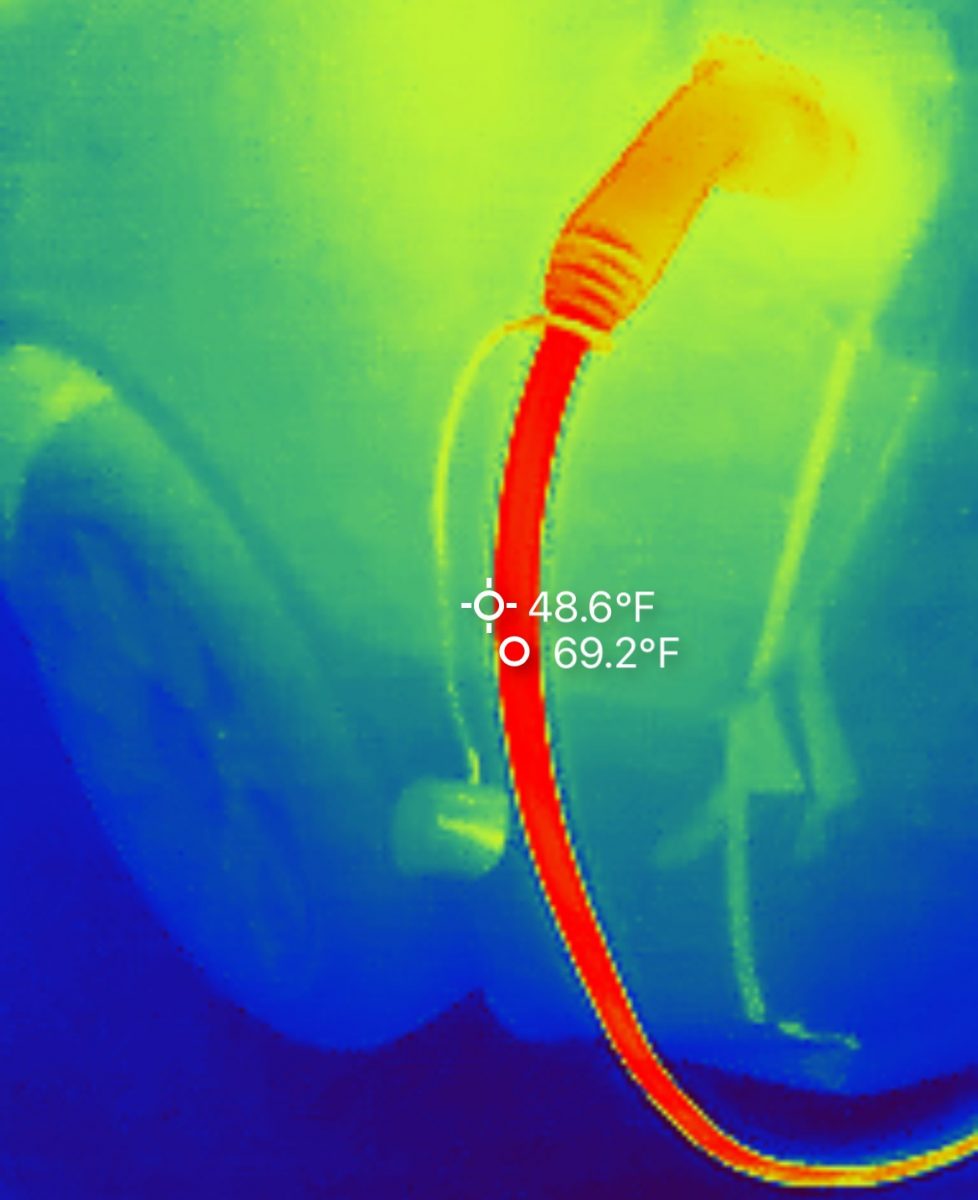
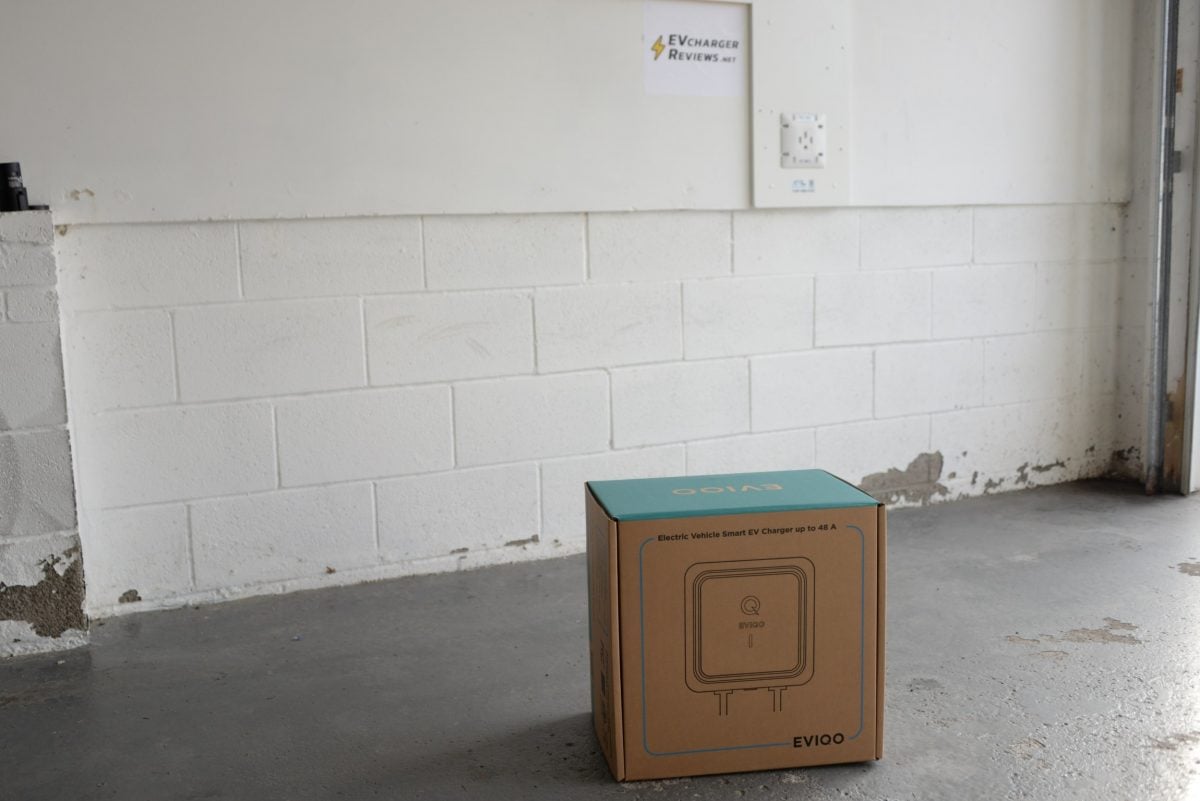

EVchargerReviews.net EVSE Review Methodology
We get the product into our facility, unbox it, inspect it, and install it just like the end user. We have a two-EV car garage with many electric miles accumulating weekly. We take EVSEs through a suite of tests, from short charging sessions, to long overnight charging sessions. We look at whether the claimed features work as expected. We check performance under challenging conditions; does the cord hold up to cold weather? Does the charging station throttle down amps due to heat and thermals? Does the Wi-Fi or Bluetooth drop the connection? Software bugs and glitches will surface during longer-term testing rather than a one-day trial. Measurements are taken on cord thickness and performance, and a thermal camera is used to look for surface hot spots after a 50 kWh stress test.
After living with the charging station product for at least two weeks, we are able to determine how the product compares to rivals, and if it deserves to be recommended to our readers.
Disclosures: Independent review by Michael Kim from EVchargerReviews.net. We participate in affiliate programs, and we may earn income when you use our links. We hope you think that is fair, based on the amount of work that goes into our reviews. EVIQO provided us with a review unit. The conclusions and opinions shared in this article are independent.
Considering buying a Tesla? Use our referral link to get $1,000 off, and help support our content.
